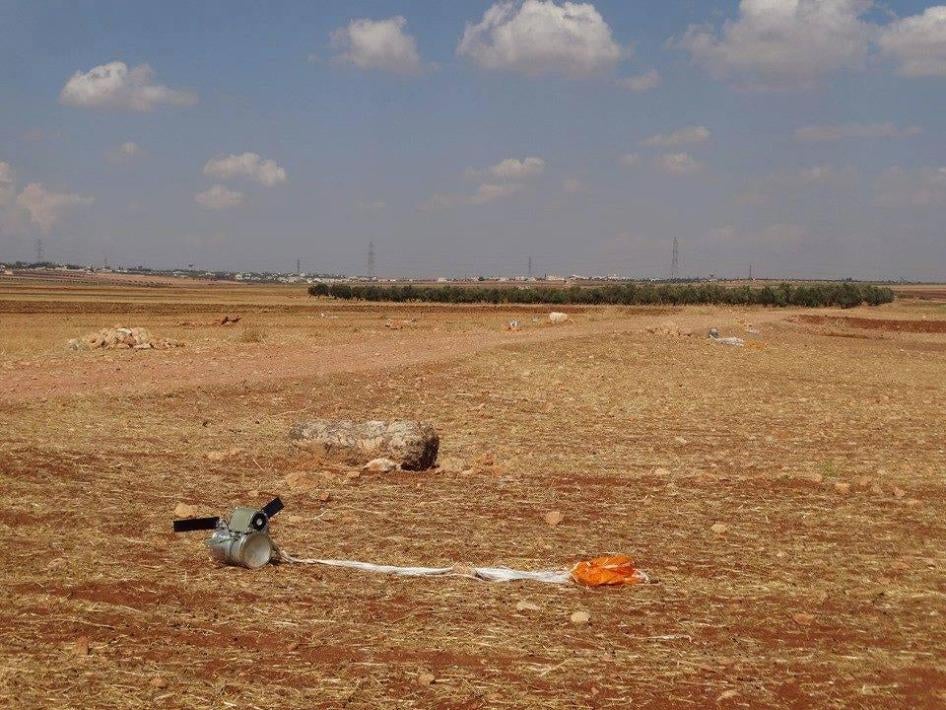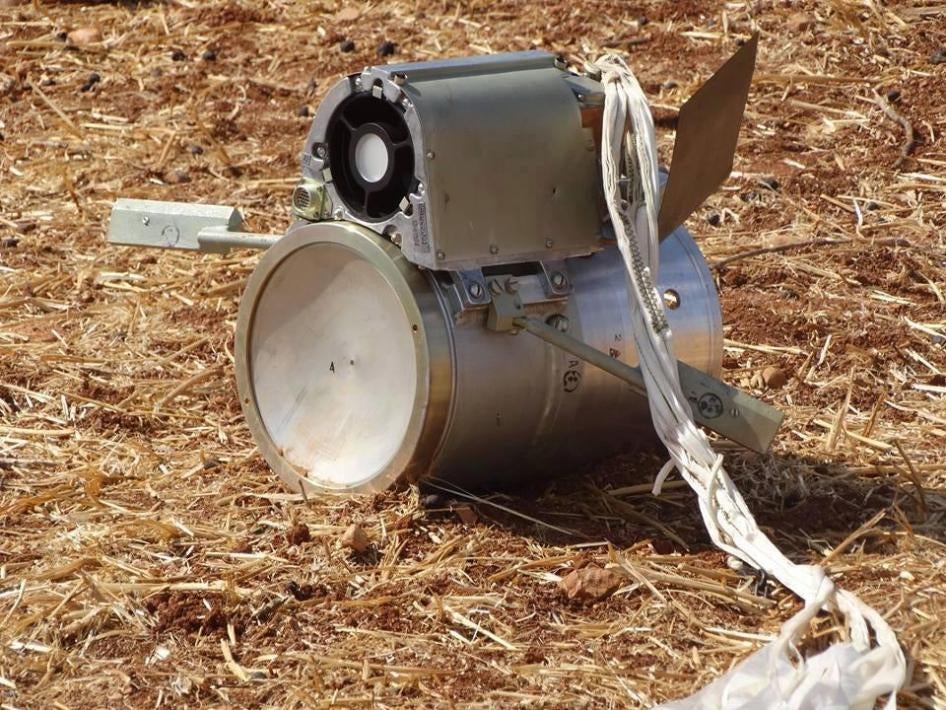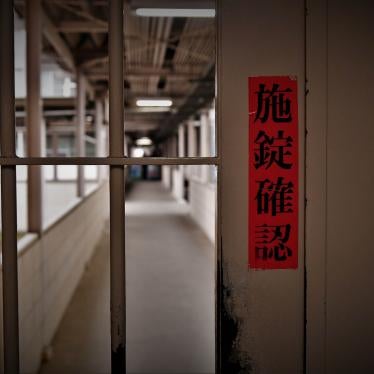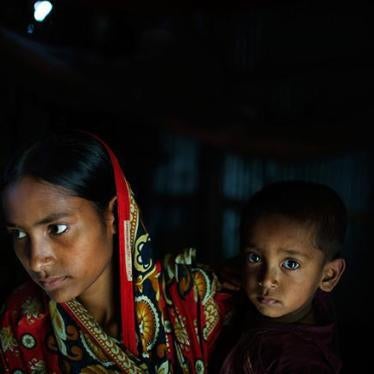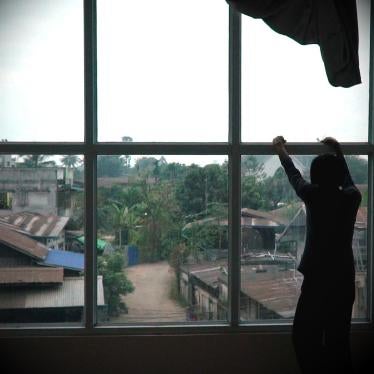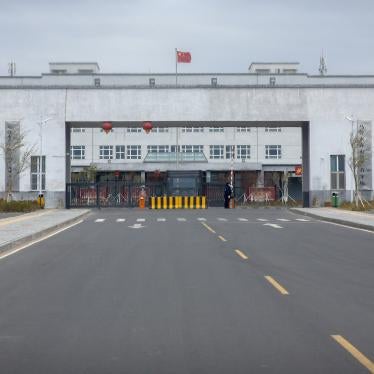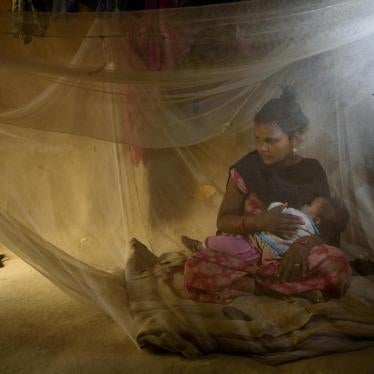(ベイルート)- 2015年10月4日のアレッポ南西の空爆で高度なロシア製クラスター爆弾が使われたと、ヒューマン・ライツ・ウォッチは本日述べた。カフル・ハラブ村近郊でクラスター爆弾が使用されたことは、ロシアがシリア国内でクラスター爆弾を使用しているか、新型のクラスター爆弾をシリア空軍に提供しているのではないかとの重大な懸念を引き起こしている。
今回の写真と映像は、シリア北部でのロシア軍とシリア軍の合同作戦の一環として、クラスター爆弾が再び空中投下されているだけでなく、ロシア製クラスター弾が地対地ロケット砲で発射されていることも示唆している。
「今までとは異なる型のクラスター爆弾がシリアで使用されていることを憂慮している。クラスター爆弾は長期的に民間人に被害を及ぼすからだ」と、ヒューマン・ライツ・ウォッチの中東局長代理ナディム・フーリーは指摘した。「ロシア、シリア両国はクラスター爆弾使用を停止し、本兵器を禁止する国際条約に即刻加盟すべきである。」
クラスター爆弾については、攻撃時に与える損害と、散布された子爆弾が不発になりやすく、除去・破壊まで脅威になり続ける性質を踏まえ、大半の国が使用を禁止している。砲撃やロケット砲での発射、航空機による投下など様々に用いられている。
カルフ・ハラブ村への攻撃は、ロシアがシリアで空爆を開始した9月30日以降、アレッポ、ハマ、イドリブ各県でのクラスター爆弾の地上発射と空中投下が、映像と写真で次々に報告され始めたことに重なる。
カフル・ハラブ村付近の農村地帯で撮影されたとされる写真は、10月6日に地元メディアがインターネットに掲載したもので、センサーで起爆するSPBE型子爆弾の残骸が写っている。シリア内戦でのこの型のクラスター爆弾の使用報告は、今回が初めてだ。爆弾はパラシュート降下しつつ、目標探知システムで検知した武装車両を、爆発で形成されるスラグ(金属塊)を発射して破壊するよう設計されている。
これより2日前に地元メディアがインターネットで公開した映像は、写真と同じ地域で撮られたといわれており、SPBE型子爆弾の攻撃にみられる空中での爆発が起きている様子を録画している。カフル・ハラブ村付近での攻撃で犠牲者は報告されていない。
ヒューマン・ライツ・ウォッチは、攻撃を行ったのはロシア軍とシリア軍のどちらかなのかについて最終的な結論を出すことができない。両国ともクラスター爆弾を禁じていない。
ヒューマン・ライツ・ウォッチは2012年からシリア内戦でのクラスター爆弾使用の実態を明らかにしてきた。シリア政府軍は2012年中頃にクラスター爆弾の空中投下を開始した。その後地上発射も始め、現在も続けているとみられる。一方でイスラム国(ISIS)は2014年後半にクラスター爆弾をロケット砲で発射した。シリアではこれ以外の組織についてクラスター爆弾の使用が判明した、または報告された事例はない。
ロシアがシリア国内での軍事作戦に配備する地上攻撃機とヘリコプターには、PTAB型、AO型、ShOAB型子爆弾を用いるロシア製RBK系クラスター爆弾を投下する能力もある。これらの爆弾は、ヒューマン・ライツ・ウォッチがシリア空軍の使用をこれまで明らかにしてきたのと同型である。
クラスター兵器連合(CMC)が今年9月に発表した年次報告書「クラスター爆弾モニター2015年版」によれば、シリアでは2012年から2014年末までにクラスター爆弾攻撃と不発子爆弾によって少なくとも1,968人の犠牲者が出ている。記録された死者の大半は民間人だった。
クラスター弾に関する条約(2008)はこの1ヶ月でコロンビア、モーリシャス、ソマリアが批准し、現時点での批准国は98ヶ国となっている。同条約はクラスター爆弾の使用・製造・移譲・保有を完全に禁じ、かつ10年以内のクラスター爆弾残存物の除去ならびに被害者の支援を義務づけるものだ。
本条約は各締約国に「この条約の締約国でない国…がクラスター弾の使用を抑制するよう最善の努力を払う」よう義務づけている。非締約国48ヶ国を含む140ヶ国以上が、シリアでのクラスター爆弾の使用を非難している。非難の大半は、政府による声明のほか、国連総会や国連人権理事会での決議に参加する形で行われた。
ヒューマン・ライツ・ウォッチは国際組織「クラスター兵器連合(CMC)」の共同創設者で現在議長を務めている。2015年10月1日、同連合はロシアに対し、民間人に「予測可能で予防可能な」危害を与えるとして、シリアでクラスター爆弾を使用しないよう警告した。
Evidence of New Cluster Munition Attacks
Human Rights Watch was not able to conduct on-the-ground research to examine impact sites and remnants and collect other data. To confirm the use of cluster munitions in the villages noted below, researchers examined multiple photographs and videos taken by various sources listed below. Additionally, on October 6, the independent research organizations
Armament Research Services and
Bellingcat published reports identifying the SPBE sensor fuzed submunition and RBK cluster bomb that deploy it as the weapons used in air attacks on Kafr Halab on October 4.
Kafr Halab, AleppoPhotographs reportedly taken in Kafr Halab and posted online on October 6 by the Shaam News Network, a local media outlet opposed to the Syrian government, show remnants that Human Rights Watch has identified as SPBE sensor fuzed submunitions. A video posted by the same media outlet to
Facebook on October 4 that it said was filmed in Kafr Halab shows munitions dispersing in mid-air and creating more than 24 small detonations. Another video posted to
YouTube on October 4 by the Shaam News Network shows a fixed-wing attack aircraft dropping a bomb that ejects submunitions as it travels in the air, but does not indicate the location where the video was filmed.
No casualties have been reported from the attack on Kafr Halab.
According to a catalogue of Russian-made ordnance and munitions, the parachute-retarded SPBE sensor fuzed submunition is designed to destroy armored vehicles by firing an explosively formed slug of molten metal downward after the vehicle is detected by a targeting system. According to standard international references, including Jane’s
Air Launched Weapons, an authoritative reference publication, each SPBE sensor fuzed submunition weighs 15.6 kilograms.
While no photographs are available showing remnants of the bomb that delivered the SPBE sensor fuzed submunitions in Kafr Halab, they most likely originated from an RBK-500 SPBE cluster bomb, which is the only type of air-dropped bomb capable of delivering this type of submunition. Each air-dropped RBK-500 SPBE bomb contains 15 SPBE sensor fuzed submunitions.
The RBK-500 SPBE cluster bomb is banned by the Convention on Cluster Munitions. It is similar to the United States-produced CBU-105 sensor fuzed weapon used by the Saudi Arabia-led coalition during 2015 in Yemen. That weapon is also prohibited by the ban treaty.
On October 6,
Armament Research Services and
Bellingcat both published research identifying the SPBE sensor fuzed submunition and RBK cluster bomb that most likely deployed it as the weapon used on Kafr Halab on October 4 based on the same source materials available to Human Rights Watch.
A payload of five SPBE sensor fuzed submunitions can also be ground-delivered by a 300 millimeter (mm) 9M55K6 rocket fired by the BM-30 Smerch multi-barrel launcher to a distance of up to 70 kilometers. However, Human Rights Watch has not seen any visual evidence of remnants of 300mm rockets in the vicinity of Kafr Halab.
Keferzita, Hama
A
video posted on October 7 by the media office of the Revolutionary Command Council in Hama, a coalition of armed group factions, that the videographer identifies as being shot in the town of Keferzita, northwest of Hama, shows smoke trails of ground-fired rockets launched from the direction of Jabal Zayn al-Abidin and multiple subsequent explosions of submunitions in the town. Another
video posted hours earlier by a different YouTube channel, Kafrzita, and filmed from a different location, shows the same strike. A
photograph posted online on October 7 by the Yalla Souriya blog with a title stating it was taken at Keferzita shows remnants of the distinctive tail section of a 300 mm Smerch artillery rocket.
Human Rights Watch has previously
documented Syria’s use of the BM-30 Smerch multi-barrel launcher to deliver antipersonnel fragmentation submunitions, including at Keferzita in February 2014.
Ma'saran village, IdlibPhotographs and a
video posted online by local activists on October 7, 2015, with title text that says they were taken at Ma'saran village in Idlib governorate, northeast of Ma'rat al-Nu`man, shows at least one unexploded AO-2.5RT submunition and the remnants of an RBK-500 canister which can contain up to 108 submunitions.
On October 8, Reuters
published a photograph taken in Ma’saran that shows a first responder handling unexploded AO-2.5RT submunitions that local activists told Reuters were used in an attack by the Russian air force on October 7
.
In June 2013, the Brown Moses
blog, which catalogs weapons used in Syria, identified AO-2.5RT submunitions in photographs it said were taken in Harbnafeh, Hama governorate. Since then, unexploded AO-2.5RT submunitions have been recorded visually by media outlets and activists at various locations in Syria, but not their delivery system. These submunitions can be scattered from a KMGU dispenser affixed to a fixed-wing aircraft or helicopter and also delivered by the RBK-500 AO-2.5RT cluster bomb.
